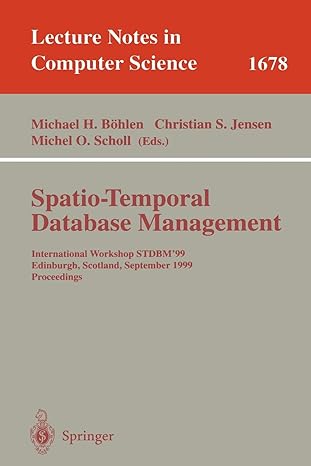Question
Consider the puzzle shown next. Green square is the start block and red square is the goal block. The green block can move one square
Consider the puzzle shown next. Green square is the start block and red square is the goal block. The green block can move one square at a time in the 4 directions (Left, right, up, down). a. Give a formulation of the search problem. b. Solve the problem using greedy search with the Manhattan distance as heuristic. Show the search tree. c. Solve the problem using A* search using Manhattan distance as heuristic. Show the search tree.
_______________________________________________________________________
Assume that a rook can move on a chessboard any number of squares in a straight line, vertically or horizontally, but cannot jump over other pieces. Can the Manhattan distance be considered an admissible heuristic for the problem of moving the rook from square A to square B in the smallest number of moves?
Solution: No. The Manhattan distance may over-estimate the optimal remaining number of moves to the goal because a rook may cover several squares in a single move. NOTE: If the path cost instead were the number of squares covered, then Manhattan distance would be admissible.
____________________________________________________________
Consider the 8-puzzle problem. Assume that the goal state is the following state: In any state s, for any non-empty tile i = 1 to 8, the number ni of permutation inversions is the number of tiles j < i that appear after tile i. The total number of permutation inversions of s is P = n 8i=1 i Let h(N) be the heuristic function that evaluates to the total number of permutation inversions in the state of node N. e.g. h(N) = sum of permutation inversions = n5 + n8 + n4 + n2 + n1 + n7 + n3 + n6 = 4 + 6 + 3 + 1 + 0 + 2 + 0 + 0 = 16 Is h admissible? If yes, prove it. If not, show a counter-example
_____________________________________________________________________--
The state space consists of states S, A, B, C, D, E, G1, and G2. S is the initial state. G1 and G2 are both goal states. The possible transitions between states are indicated by arcs. So, for instance, the successor function applied to state S returns {A, B}; applied to state A it returns {C, D}, etc... The number labelling each arc (roughly at the mid-point of the arc) is the actual cost of the corresponding action. For example, the cost of going from S to A is 3. The number in bold italic near each state is the value of the heuristic function h at that state. For example, the value of h at state C is 3. a. Is the heuristic function h defined by values provided in the figure admissible? How do you know? How does this affect the search? b. Is the heuristic function h defined by values provided in the figure consistent?
Step by Step Solution
There are 3 Steps involved in it
Step: 1

Get Instant Access to Expert-Tailored Solutions
See step-by-step solutions with expert insights and AI powered tools for academic success
Step: 2

Step: 3

Ace Your Homework with AI
Get the answers you need in no time with our AI-driven, step-by-step assistance
Get Started


